 As a Hindu priest I have certainly witnessed my share of marriage problems that have resulted in the dissolution of many unions. In this country 50% of all first marriages will fail within ten years and within Southern California, where I reside, 65% to 75% of all first marriages will fail. In Canada the national divorce rate is closer to 40%. In both countries 70% of all divorces are initiated by wives. While I believe the divorce rate within the Hindu community to be significantly lower than the national average this does not mean that the marriages are necessarily happier, it just means that husband and wife remained together became of social pressures and taboos against marriage separation and divorce that exist within the Hindu community. Two years ago I witnessed the dissolution my son Shesha’s marriage to Tara. And now I am witnessing an even more painful marriage dissolution, between my son Vrindavan and my daughter-in-law Jerri. This one is very personal because I performed the wedding 5 years ago in my own Hindu Temple. Amidst this latest disaster, I recently found out that my son Shesha and his girl friend Nikki are now planning to get married. How wonderful! I send them my blessings and yet I can not help but wonder, “Will this new union beat the dismal marriage statistics of this country”?
As a Hindu priest I have certainly witnessed my share of marriage problems that have resulted in the dissolution of many unions. In this country 50% of all first marriages will fail within ten years and within Southern California, where I reside, 65% to 75% of all first marriages will fail. In Canada the national divorce rate is closer to 40%. In both countries 70% of all divorces are initiated by wives. While I believe the divorce rate within the Hindu community to be significantly lower than the national average this does not mean that the marriages are necessarily happier, it just means that husband and wife remained together became of social pressures and taboos against marriage separation and divorce that exist within the Hindu community. Two years ago I witnessed the dissolution my son Shesha’s marriage to Tara. And now I am witnessing an even more painful marriage dissolution, between my son Vrindavan and my daughter-in-law Jerri. This one is very personal because I performed the wedding 5 years ago in my own Hindu Temple. Amidst this latest disaster, I recently found out that my son Shesha and his girl friend Nikki are now planning to get married. How wonderful! I send them my blessings and yet I can not help but wonder, “Will this new union beat the dismal marriage statistics of this country”?
Blessings come not only in the form of acceptance, but also as good advice. I therefore offer the following thoughts on marriage to Shesha and Nikki. These are my real blessings.
Dear Shesha and Nikki,
Marriage is an extremely complex affair and a good argument can be made that any form of generalization will be invalid. While I agree to a certain extent, I do think that every marriage is governed by certain underlying premises. This is what I call the marriage model and so it is toward this underlying marriage model that I direct my focus. I estimate that I have performed almost 500 marriages over the last fifteen years and in almost every case I sit down with the bride, groom and family to work out the details of how they want their marriage performed. In the vast majority of cases the underlying wedding model that they choose is a streamlined version of the traditional Hindu wedding. According to this model the bride and groom come to the ceremony as individuals and then undergo a sacred ritual in the presence of family, friends and priest that amalgamates them into one entity. This new oneness of the bride and groom is symbolically suggested in many parts of the Hindu ceremony. Perhaps the most telling moment is when the bride and groom are actually tied together with an ornamental cloth. The role of family and friends in this ceremony is to witness and bless this new union. I call this type of wedding the “oneness model.” The bride and groom come as individuals, and they leave as “one” newly created entity. Even though I perform mostly Hindu weddings, I believe that this wedding model is representative of most weddings that are performed in this country and perhaps in most of the world. I also believe that this oneness model of marriage is a prescription for future unhappiness and even divorce.
I recently talked to my mother about her marriage to my father and I was shocked to learn that there was a time when my mother almost left my father. I was even further taken aback to learn that my Aunt Peggy also wanted to leave my uncle Jim, and that even my brother’s wife Janet contemplated leaving my brother John a few years ago. Then I learned that on my wife’s side a similar situation had existed. There was a point when my mother-in-law almost left my father-in-law and that even my sister-in-law wanted to leave her husband. I was stunned. These were all apparently good marriages. I had no idea that so many relationships that seemingly looked so stable had come to near dissolution in my family. Virtually all the women in these relationships had plans to leave their husbands at some point. What was going on?
I have since checked the statistics and I find that this kind of scenario is extremely common. We have previously noted that 70% of all divorce suits are initiated by wives, but it also appears that close to 90% of all wives seriously contemplate leaving their husbands at some point in the relationship, and that in most cases the husbands are not even aware of how tenuous their marriage had become. Anna, I have always assumed that the major causes of marriage dissolution had to do with some form of “gross” violation such as infidelity, physical abuse, drug addiction, mental derangement, and so forth, but when I checked the statistics, I found that not nearly as many gross violations were the cause of marriage dissolution as I expected and that when these problems were the basis of marriage dissolution they were the cause of husbands leaving their wives and not wives leaving husbands! Wives tended not to leave their husbands when they were the victims of gross abuse! Instead men left their wives. Again I was stunned. On further investigation into the near dissolution of the marriages within my own family I discovered that in no cases were any of the wives the victims of gross abuse. All the husbands were good providers with no history of gross spousal abuse. So what was going on?
I have since talked to many of the wives in my family to find out why they felt they had no recourse other than to leave their husbands, and while it would not be appropriate to discuss the details of each case, I can generalize and state that I found a common thread running through each case, namely the smothering of the wives by their well intentioned husbands. By smothering I mean that the wives felt out of control, trapped, and over burdened by their husbands. They felt they had lost their ability to creatively shape their lives and play a meaningful role in their own marriages. Their marriages had become a dead end. Invariably they told me that they could no longer “talk” to their husbands. The husbands, on the other hand, could not see any problems in the relationship and even thought that they were completely open to listening to their wives. What a huge disconnect!
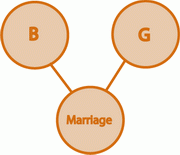 After some thought I conclude that the root cause of these “non abusive” near marriage dissolutions was the very conceptual foundations of the marriage itself, namely the “oneness” model of marriage.
After some thought I conclude that the root cause of these “non abusive” near marriage dissolutions was the very conceptual foundations of the marriage itself, namely the “oneness” model of marriage.
I have in my mind two popular television shows that were current when I was growing up, “Leave it to Beaver (1957-1963)” and “The Dick Van Dyke Show (1961-1966).” Both these shows centered around the idea American family of the time and we, as the audience, were allowed an intimate view into the inner workings of two typical American families, the Cleavers and the Petries. (There were many such shows produced at the time. The Donna Reed Show and The Adventures of Ozzie & Harriet could also be mentioned.) I cite these examples because they exemplify the “oneness” model of marriage. The couples in these marriages are so interrelated as to be indistinguishable. They have no separate identities. The happiness of one is dependent on the happiness of the other. The failing of one causes the failing of the other. Through the power of the media the oneness model of marriage is perpetuated from one generation to another.
In the South Indian wedding there is a part of the ceremony where the couple go outside to gaze up into the night sky. The groom raises his hand toward the northern sky and asks his bride to find the big dipper and to look closely at the second star on the handle. This is the great sage Vashistha. The bride is then asked to look even more closely and see a tiny star next to Vashistha. This is his wife, Arundhati. Vashistha and Arundhati are binary stars and Arundhati rotates around Vashistha. In this way the wife is asked to make her husband the center of her life as Arundhati has made Vashistha the axis of her life. This symbolic gesture of looking at Arundhati also teaches the oneness model of marriage. Here the husband plays the dominant role and the wife is asked to build her life only in terms of her husband. In this case the happiness of wife is especially dependent on her husband. This was certainly the case with my mother and aunts and they were not even married according to Hindu traditions.
I cite examples from the Hindu wedding because I know the Hindu wedding best, but there is a similar symbology at work in the western ceremony. The lighting of the unity candle and the exchange of wedding rings are two examples that also suggest the oneness model of marriage. Therefore, in both the Hindu wedding and the Western wedding the power of religious symbolism is used to promote this model of marriage. There is little doubt that in much of the world today both the media and religion work together to promote the oneness model of marriage, and regardless of whether it is consciously understood or not, most couples have this wedding model implicitly laying at the foundations of their relationship.
 As an alternative to the oneness model of marriage, I suggest the following shared mode, which I illustrate in three configurations. The point of the shared model is that it allows a balance between individuality and joint marriage space, whereas the oneness model does not. Depending on the needs of the couple they can decide how much space they wish to dedicate to each area of life. There is no right way to be married. Hence, three configurations. Illustration A affords just a small amount of individuality and so does not vary much from the oneness model; illustration B allows much more individuality, and illustration C the most. Illustration C may apply in the case of working professionals where each member keeps totally outside interests. Shesha and Nikki, a picture speaks a thousand words and so I leave it to you to decide what will work for you. I simple want to caution you not to fall for the traditional oneness marriage model that has been imperceptibly hammered into your brains from childhood. It does not work well in these times. Therefore, I offer you the shared marriage model.
As an alternative to the oneness model of marriage, I suggest the following shared mode, which I illustrate in three configurations. The point of the shared model is that it allows a balance between individuality and joint marriage space, whereas the oneness model does not. Depending on the needs of the couple they can decide how much space they wish to dedicate to each area of life. There is no right way to be married. Hence, three configurations. Illustration A affords just a small amount of individuality and so does not vary much from the oneness model; illustration B allows much more individuality, and illustration C the most. Illustration C may apply in the case of working professionals where each member keeps totally outside interests. Shesha and Nikki, a picture speaks a thousand words and so I leave it to you to decide what will work for you. I simple want to caution you not to fall for the traditional oneness marriage model that has been imperceptibly hammered into your brains from childhood. It does not work well in these times. Therefore, I offer you the shared marriage model.
The moment I set my eyes on Kama Nagari my heart ignited and I was overwhelmed with passion. It was love at first sight. Who was this person? I had to meet her. Within a short time I asked her to marry me and she accepted. My voice had spoken, “Go to her,” and I had listened. I married for love and passion and because of this my life was forever changed. For better or worse, I let you decide.
In the last four installments I have presented two theoretical models of marriage. Now I will add seven practical rules of marriage. There is, however, a problem that haunts me. I have no right to give practical advice on marriage to anyone. I have never followed any of the suggestions that I make here. I have blatantly broken all my own rules. That being said, every single one of these rules has been derived from my personal experience, sometimes very hard experience and by not following these rules I have made my life unnecessarily difficult. All I can do is guarantee that these seven rules will make the way of marriage easier, and the more you can follow them, the easier your life will be.
1. The number one mistake that a couple makes regarding marriage is to fail to realize what marriage is. Marriage is a long term legal contract that has to do with assets and liabilities. The assets of a marriage generally include real estate, investments and household property. The liabilities of a marriage are generally children and debts. The contract of marriage, therefore, has to do with property, children and inheritance. It is not a contract about emotions, feelings or love. So when you sign that marriage license be aware that you are signing a legal contract.
2. When choosing a partner be wary of damaged individuals. A damaged individual is a person who, primarily as a child, has been emotionally or physically hurt. This includes someone who has been physically beaten, sexually molested or who has grown up with alcoholic or drug addicted parents or with parents who have been in prison. Be also wary of persons who have grown up in a family where divorce has taken place at a time when the children were young or where some other kind emotionally dramatizing separation has occurred. As far as possible marry a person who has grown up in a stable, secure, two parent family.
3. It is important to marry a person who is your intellectual, emotional, economic and social equal. Therefore, you must know who you are as a person. If you have grownup in a family with no economic worries and you have lived with many luxuries do not marry a person who has not had these standards. If you are a person who likes to be social and entertain, do not marry a person who does not enjoy these things. If you are well educated, do not marry a person who is uneducated. If you want children do not marry a person who does not want children, and so on.
4. Do not get married until you have lived on your own for some time. It is important to give yourself time to mature and to establish your own identity before marriage. This relates to the previous suggestion. You do not know who you are as a person until you have lived on your own.
5. Before marriage you should openly discuss with your partner the most important aspects of how your marriage will run. This should include money management, sex,
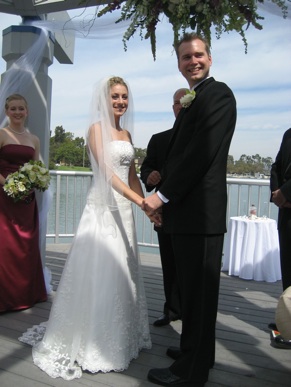
Shesha and Nikki getting married Sept. '06
child rearing, social freedoms, religion (especially children’s religious upbringing), relations with in-laws, vacations, and personal habits such as diet, smoking, alcohol, and so on. The more you can discuss in advance, the better. It is also important to realize that marriage is dynamic and most of what you discuss will change. Be prepared to adjust.
6. Do not marry until your education is complete and your career has started. So long as you are still a student, you are not fully mature and not properly qualified for marriage, either emotionally or economically.
7. Take responsibility for your own happiness. Your partner is not responsible to make you happy. Therefore, order your life accordingly. In this regard I suggest some version of the shared model of marriage. This is perhaps the most important rule of all.
So, Shesha and Nikki, this is all that I have to say on the topic of marriage. My suggestion is that you take all the love and passion that you have for each other and package it in one of the marriage models that you think best suits your circumstances and then take as much of my practical rules as you can and go for it. Have a good life. You have my blessings.


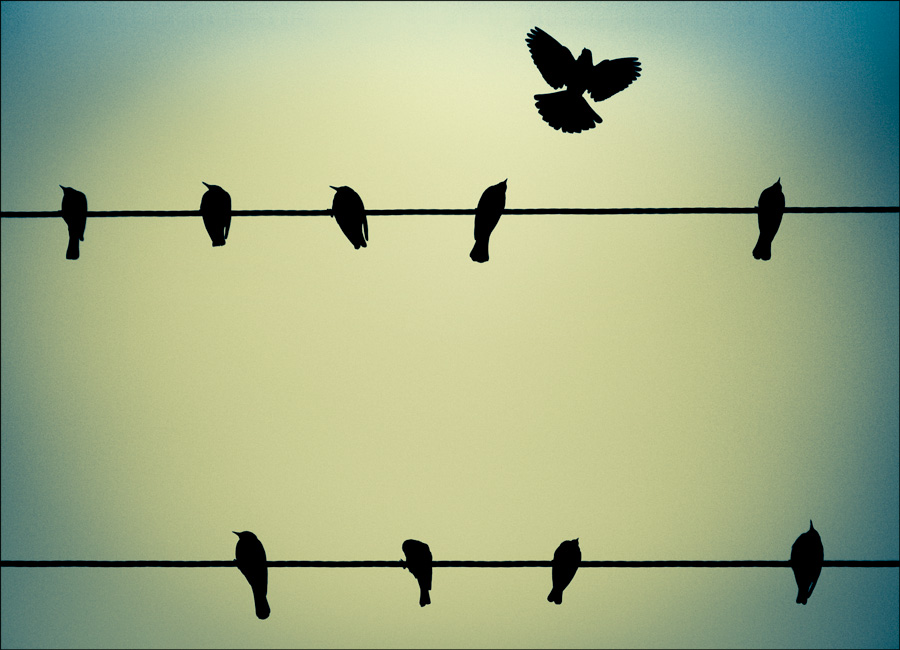


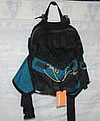
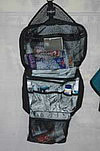






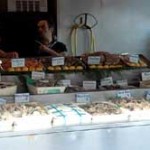




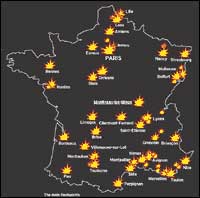


 life again entered my soul. The fresh smell of the ocean air overwhelmed me. The humidity and the repressive heat of Dallas were gone. I felt that all my burdens and responsibilities had been shed. In that split second I knew that I would never again return to Dallas. But then another thought entered my mind: I did not want to be with Kama Nagari anymore. I could no longer face the life that I was creating with her. I began to entertain the thought of leaving her. So once I arrived at the temple Jagadisha arranged for me to share a small place with some other devotees. I stayed in LA and quietly let the days creep by. I did not call Kama Nagari, nor did I return her calls. I was trying to forget that she ever existed. She had been abandoned in Dallas with a four month old child.
life again entered my soul. The fresh smell of the ocean air overwhelmed me. The humidity and the repressive heat of Dallas were gone. I felt that all my burdens and responsibilities had been shed. In that split second I knew that I would never again return to Dallas. But then another thought entered my mind: I did not want to be with Kama Nagari anymore. I could no longer face the life that I was creating with her. I began to entertain the thought of leaving her. So once I arrived at the temple Jagadisha arranged for me to share a small place with some other devotees. I stayed in LA and quietly let the days creep by. I did not call Kama Nagari, nor did I return her calls. I was trying to forget that she ever existed. She had been abandoned in Dallas with a four month old child. I do not mean a job in the ordinary sense. In those days full time devotees worked for the community and were given either a temple apartment or money to find their own private apartment. They were also given a small maintenance stipend that matched their individual or family needs. In other words, I was given a sustenance wage for my “work.”
I do not mean a job in the ordinary sense. In those days full time devotees worked for the community and were given either a temple apartment or money to find their own private apartment. They were also given a small maintenance stipend that matched their individual or family needs. In other words, I was given a sustenance wage for my “work.”